Body length: 32–53 mm.
Eyes: eye interommatidial setaeseta:
a sclerotized hair-like projection of the cuticle
absent, eye deeply emarginateemarginate:
notched at the margin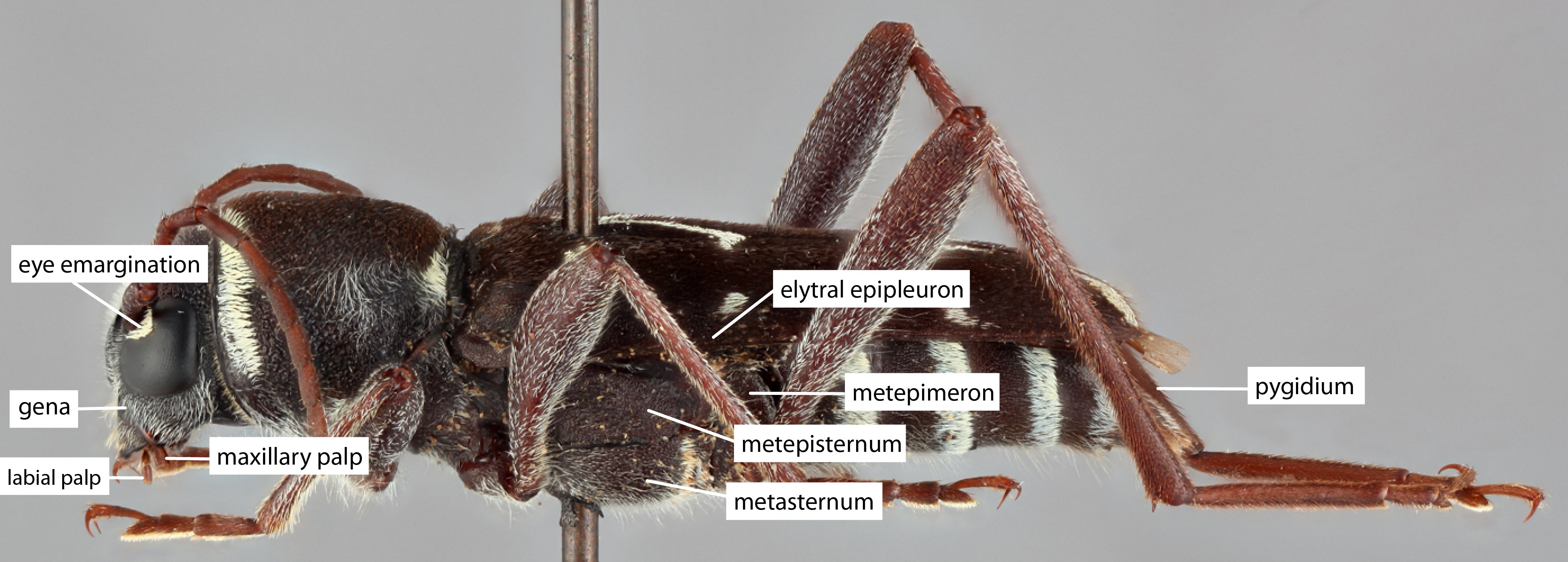 > half width, eye ommatidial density fine.
> half width, eye ommatidial density fine.
Antennaeantenna:
in larval and adult insects, paired segmented appendages, borne one on each side of the head, functioning as sense organs and bearing a large number of sensilla
: antennal length reaches between basebase:
the part of any appendage or structure that is nearest the body
and end of elytraelytron:
the leathery forewing of beetles, serving as a covering for the hind wings, commonly meeting opposite elytron in a straight line down the middle of the dorsum in repose
or reaching/surpassing end of body, antennal flagellar segments elongateelongate:
much longer than wide
, scapescape:
the first proximal segment of the antenna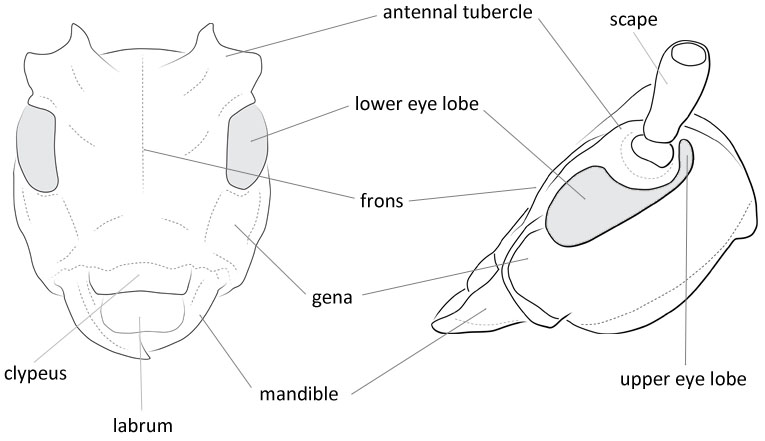 granulate at apexapex:
granulate at apexapex:
end of any structure distad to the base
, no scar, antennal segment 3 > scapescape:
the first proximal segment of the antenna .
.
Pronotumpronotum:
the upper and dorsal part of the prothorax
: pronotumpronotum:
the upper and dorsal part of the prothorax
shape transversetransverse:
broader than long
, pronotumpronotum:
the upper and dorsal part of the prothorax
lateral armature acute spinespine:
a protuberance with an acute (sharp) distal end
.
Prosternum: prosternal processprosternal process:
a posterior extension of the prosternum between the coxae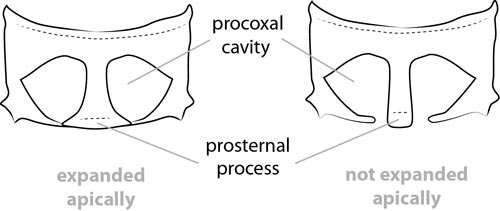 dilated at apexapex:
dilated at apexapex:
end of any structure distad to the base
or not dilated at apexapex:
end of any structure distad to the base
, procoxal cavities open posteriorly.
Elytraelytron:
the leathery forewing of beetles, serving as a covering for the hind wings, commonly meeting opposite elytron in a straight line down the middle of the dorsum in repose
: elytral length reaching or close to end of abdomen, elytral apicesapex:
end of any structure distad to the base
emarginate or with tooth or spinespine:
a protuberance with an acute (sharp) distal end
, elytral color brown, yellow or orange, elytral color pattern present or absent.
Legs: visible tarsomerestarsomere:
subdivision or article of the tarsus, usually numbering from two to five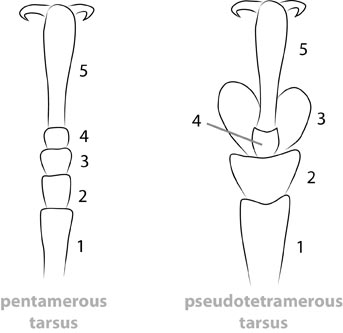 : 4, femora slender, rarely robust, protibial spursprotibial spur:
: 4, femora slender, rarely robust, protibial spursprotibial spur:
sclerotized spine(s) located at the distal tibia; can be single, double, or absent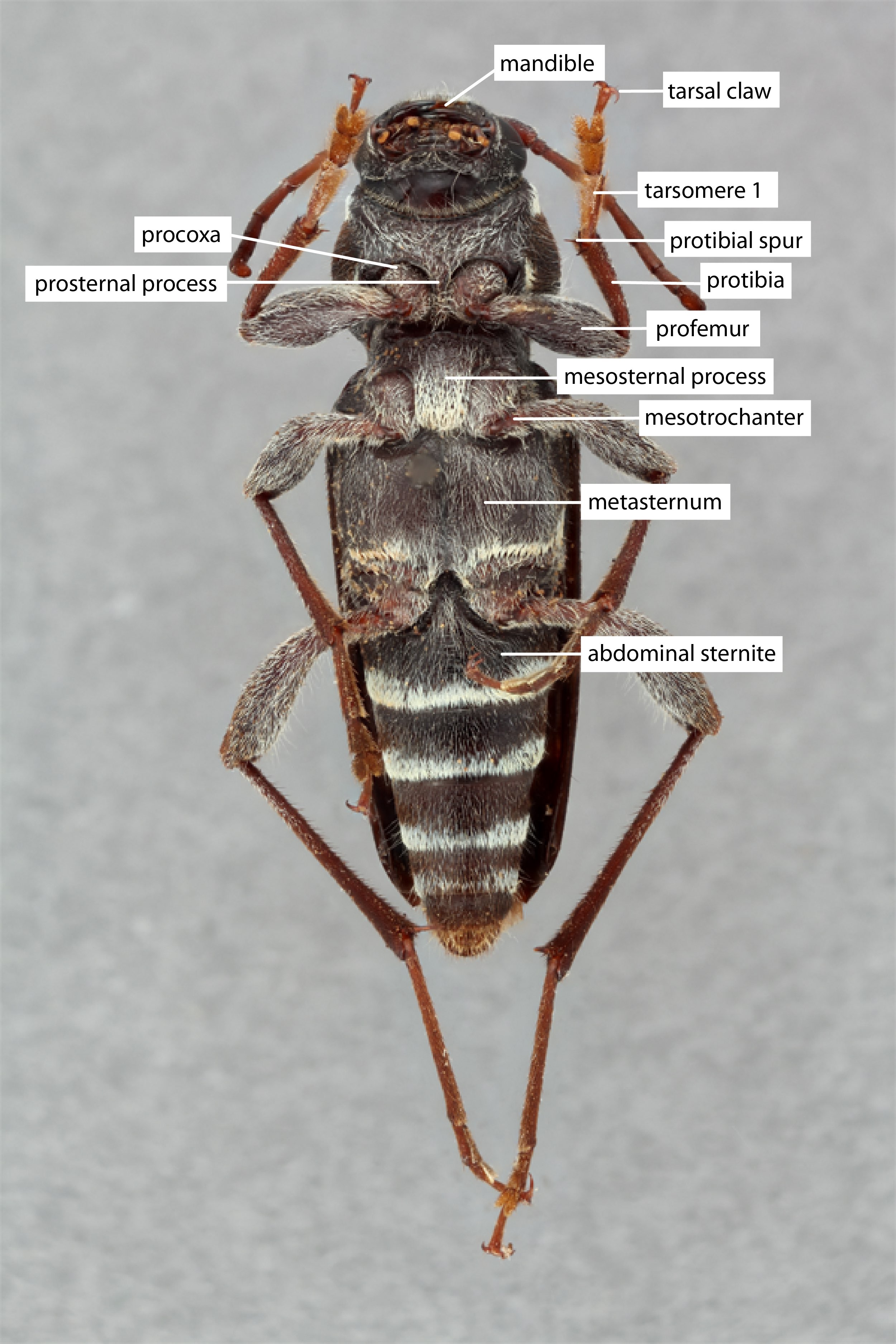 : 2, tarsal clawstarsal claw:
: 2, tarsal clawstarsal claw:
usually paired claws of the pretarsus, at the distal end of the leg simple.
simple.
Batocera, Rosenbergia
Apriona does not have a prominent carinacarina:
an elevated ridge or keel, not necessarily high or acute
(cicatrixcicatrix:
a scar; a scar-like structure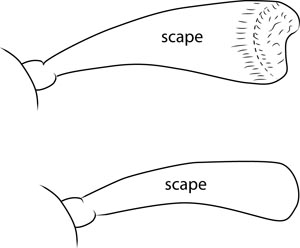 ) at the scapescape:
) at the scapescape:
the first proximal segment of the antenna apex like Batocera. The 11th antennomereantennomere:
apex like Batocera. The 11th antennomereantennomere:
a subunit of the antenna, including the scape, pedicel, and flagellomeres
is pseudo-divided making the antennaeantenna:
in larval and adult insects, paired segmented appendages, borne one on each side of the head, functioning as sense organs and bearing a large number of sensilla
seem 12-segmented.
Palearctic (Asia), Indomalaya, Australasia
broadleaf trees
37 species
Parapriona Breuning, 1948
Anapriona Breuning, 1949
Apriona (Cylindrapriona) Breuning, 1949
Apriona (Humeroapriona) Breuning, 1949
Apriona (Mesapriona) Breuning, 1949
Apriona (Cristapriona) Hua, 1986
Apriona Chevrolat, 1852